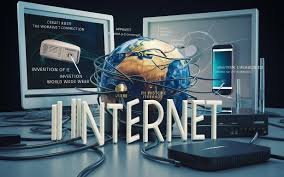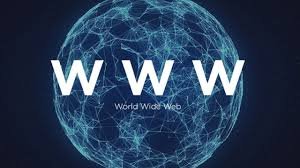In the twenty-first century, with this saturated intermeeting of all areas of life, it is an easy thing to forget that the internet is relatively new. The history of the internet-from the shoestring research project of the early days of the Cold War to the international network through which it is possible to connect billions-comprises one of the most incredible stories of imagination, collective effort, and accident. Beyond defining the moments that have characterized this journey from 1969 up to today, this essay goes further to seek what could possibly be the future of this game-changing technology.

The Seeds of Connection: ARPANET and the Early Years, 1969-1980s
It finds its roots in the late 1960s, during the Cold War. The United States Department of Defense’s Advanced Research Projects Agency (ARPA) wanted to devise a communication network that was resistant to nuclear attacks. This paved the way for ARPANET, the early version of today’s internet.

In 1969, the first message over ARPANET was sent. That was a milestone, indicating the birth of the internet. Originally, ARPANET was connecting a few research institutions so that scientists and researchers could share information and resources. The early Internet was text-based, bandwidth was limited, and protocols were complex. Yet, these were the years that laid the bedrock for the future of the Internet.
The most important milestones in this regard were the formulation of TCP/ IP-standards that comprise basic communication over the internet-and also email, at the start of the 1970s. TCP/IP enabled different networks to converse among themselves using the same language for communication. With that, emails introduced in the early 1970s were to change it all, of course, sending messages fast and efficient.
Rise of the World Wide Web (1990s)
The 1990s saw the explosion of the internet into the mainstream, largely due to the invention of the World Wide Web by Tim Berners-Lee at CERN. The World Wide Web provided a user-friendly interface to the internet, using hypertext and URLs to navigate between different web pages. This made the internet accessible to a much wider audience, beyond the academic and research communities.

This development was further propelled by the release of graphical web browsers such as Mosaic and Netscape Navigator. These made access to the web pages easy to view and interact with; thus, developers could now also include images, multimedia, and interactive elements into their web pages.
E-commerce also came out very strong in the late 1990s and contributed to the phenomenal growth of the internet as businesses began to recognize the web’s potential in finding new customers. This era further gave birth to some search engines such as Yahoo! and Google, which could keep track for users of this exponentially expanding Web. These turned out to be one of the essential tools at one’s beck and call over the internet and developed as important footsteps in Internet history.
The Mobile Revolution and the Social Web (2000s)
The 2000s saw an explosion in the proliferation of mobile internet access and social media. Smartphones and other mobile devices made it possible for users to connect to the internet from anywhere at any time. This, therefore, made a revolution in how people used the internet.

Social media platforms emerged, players like Facebook, Twitter, and YouTube among others, connected the world and allowed people to share information, ideas, and experiences across geographical barriers. Social media has revolutionized the way people communicate and interact socially. It has also opened new opportunities for businesses, organizations, and individuals to reach out to their audience.
Equally important in the development of the internet during this period was the rise of broadband internet access. With broadband connections, access to the internet became faster and more reliable, thus allowing video and other multimedia content to be streamed. This helped give birth to online video platforms such as YouTube and Netflix, which have revolutionized the entertainment industry.
The Internet of Things and the AI Revolution (2010s-Present)
Presently, it’s the era of IoT and, besides, an overwhelming influence of AI. A network of anything-from a simple house appliance up to industrial equipment-will start gathering data or sharing it in all directions. This is a future that, using automation, efficiency, and data-driven decisions, will reimagine industries in anything from health care to manufacturing.

AI already has a very active role in the internet, powered by everything that ranges from searching to recommendation systems. AI algorithms allow for personalized online experiences through the analysis of vast amounts of data and automatic execution of particular tasks. Such development may shift many aspects of our lives-transportation or health.
Problems and the Future of the Internet
And while with every leap of progress the Internet has achieved, newer challenges have emerged: cybersecurity threats, privacy issues, and the spread of misinformation-all of which have become a burden. The modern trend is that, while matching pace with increased dependence on the Internet in human lives, securing, making it private, and accessible has been equally important.
The future of the internet is not well known, but a number of trends are probable to feature in its development. One probable future direction of the internet is the met averse-a fully immersive virtual world where users could interact with other users and digital objects. Web 3.0 refers to a decentralized web that uses blockchain technology; this is another developing trend that will likely change the way the internet works. The evolution of the internet is ongoing, and its future depends on the choices we make today. By addressing the challenges and embracing the opportunities ahead, we can ensure that the internet continues to be a force for good in the world, connecting people, fostering innovation,
